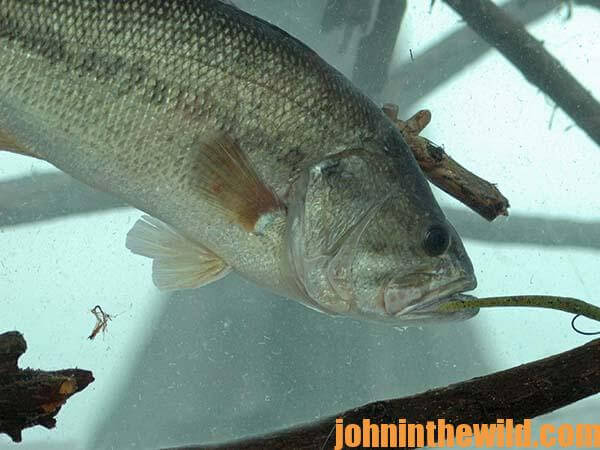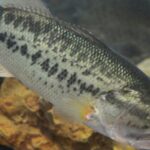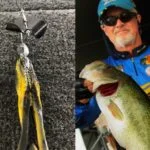John’s Note: Quite possibly the most-versatile bass lure ever created, the plastic worm belongs in every angler’s tackle box. His daddy was oil. His mother was heat, and his mentor was a fisherman. He swam into the world of bass fishing years ago and left such a definitive mark on the sport that no angler would consider searching for bucketmouths without him. Many sportsmen believe he is the most lifelike bait around, and some say he has the most action of any lure. And most agree that when bassing is tough, the plastic worm is the weapon on which you can rely to catch bass. Study these tactics to learn more about how the worm is bringing bass to the boats for the pros.
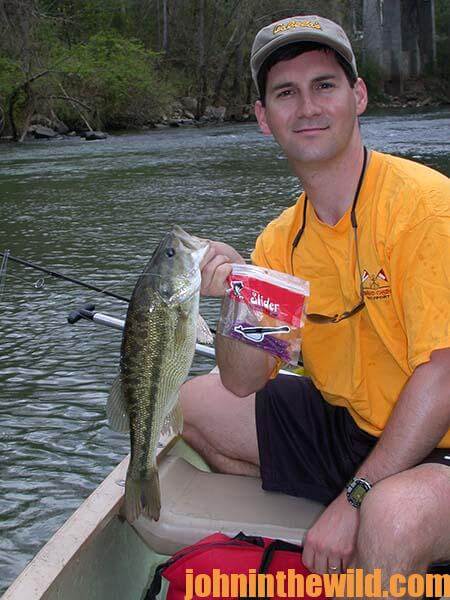 When a sportsman says the words, “worm fishing,” he can mean so-many different methods of angling that unless you specify the type of worm fishing you’re discussing, you may as well say bass fishing or artificial lure fishing.
When a sportsman says the words, “worm fishing,” he can mean so-many different methods of angling that unless you specify the type of worm fishing you’re discussing, you may as well say bass fishing or artificial lure fishing.
Think for a minute about Slider worm fishing. Generally speaking, worm fishing is thought to require a stout rod, 12 to 15 pound test line, and a baitcasting reel. But Slider worm fishing is just the opposite. The proficient Slider worm fisherman will use 2 to 4 pound test line and a 1 to 4 inch worm with a flathead jig in place of a bullet sinker. Instead of bottom hopping the worm like the sportsman who fishes the Texas-rigged worm does or flipping the worm like flippers do, the Slider fisherman simply casts the small plastic worm out, lets it fall and utilizes a steady retrieve to bring the bait back to the boat.
“The less action you can give a Slider worm, the more bass it will catch.”
Charlie Brewer of the Slider Company “www.sliderfishing.com” from Lawrenceburg, Tennessee, comments, “Bass will attack the Slider worm, because it’s slow-moving, easy to catch and just a little morsel instead of a huge meal to eat. And, with Slider fishing, you can fish the bait in all depths of water. By that I mean, you can cast the bait out and retrieve it just under the surface. You can allow the bait to fall and begin to retrieve it in mid-water, or you can slide the worm right along the bottom. So, no matter at what depth the bass are holding, you can catch them on the Slider worm.”
One of the most productive places to fish the Slider worm in the summertime is along the edges of floating boat docks.  Bass usually suspend on pilings of boat docks. However, when there is no piling to relate to, the bass often will hold in the shade, in mid-water under these floating docks. Generally the weather is so hot that the bass won’t actively feed. But when they see that little bait slowly cruising mid-water, they often will attack. Since there are no pilings or pillars under the water for the line to be tangled on, these fish can still be taken on 2 and 4 pound test line.
Bass usually suspend on pilings of boat docks. However, when there is no piling to relate to, the bass often will hold in the shade, in mid-water under these floating docks. Generally the weather is so hot that the bass won’t actively feed. But when they see that little bait slowly cruising mid-water, they often will attack. Since there are no pilings or pillars under the water for the line to be tangled on, these fish can still be taken on 2 and 4 pound test line.
“I like to fish the Slider worm under boathouses in the middle of the summer,” says Rick Clunn, four-time Bassmaster Classic Champion from Ava, Missouri. “During that time of year and under that particular structure, bass often will suspend. Many times swimming a small, slow-moving Slider type of worm through mid-water is the most effective technique for taking bass. The trick to successfully using Slider fishing is to cast the bait out, let it sink to mid-water and retrieve the bait on a slow, steady retrieve. With almost every other lure, the angler must give the bait some type of action to make it appear lifelike. But when Slider fishing, giving the lure as little action as possible makes it more likely to draw strikes.”
The little Slider worm is also extremely deadly on spotted bass, particularly in the winter months. Since the spots aren’t as affected by weather change as largemouths are, in many deep, clear lakes like Alabama’s Smith Lake, the small, 4 inch plastic worm fished very slowly will produce hot action in cold weather. Smith Lake has given up four world record spotted bass in years past. Although most anglers agree that the winter months at Smith Lake are the hardest months to try to catch bass there, this time is when many outdoorsmen head for Smith. “Remember that during the winter months bass want little, slow-moving baits,” Charlie Brewer explains.
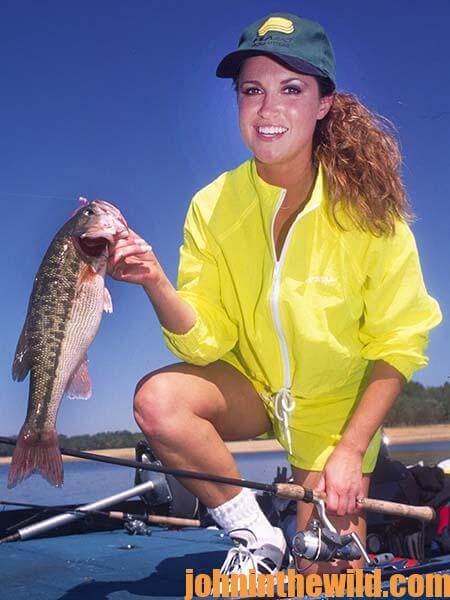 In clear lakes, the smaller the line you fish, the less you spook the bass, and the better your bait seems to perform.
In clear lakes, the smaller the line you fish, the less you spook the bass, and the better your bait seems to perform.
I use 4 pound test line and an ultralight spinning rod and reel to Slider fish for Smith Lake spots in the winter. I count the 4-inch bait down and fish every story of the water. With most baits, you generally only fish one story of the water. For instance, with a topwater lure you fish the top of the water, with a medium diving crankbait you fish the middle story of the water, and with a pig and jig you bump the bottom. But by using the Slider worm I can slide that bait slowly through every foot of water and work all the depths from top to bottom until I locate suspended fish.
Once I find the bass, I can maintain my bait in that depth of water through 75 percent of my retrieve. So my lure stays in the bass’s strike zone longer, moves slower, and generally produces better than many other baits you may fish for suspended bass. And on clear, deep, rocky lakes like Smith in the wintertime, the green Slider worm works magic on big spots.”
Also one of the places that the Slider worm pays big bass dividends is in the clear lakes of the West – where taking bass down 20 to 40 feet is not uncommon. The water is so clear that using the light line the bass can’t see definitely provides an advantage for the angler. However, the angler may miss many bass fishing that deep with small line and little baits, because there will be a large bow in the line leading from the surface to the bait.
“Getting enough force on the line to set the hook properly, may be difficult.
Serveral tournament anglers have told me they file the barbs off the hooks of the Slider worm to get the hook to penetrate deeper into the fish’s jaw and then keep steady pressure on the line to not lose a bass.
To get “How to Win a Bass Tournament: Personal Lessons from 8 Pro Bass Fishermen,” “Reelfoot Lake: How to Fish for Crappie, Bass, Bluegills and Catfish and Hunt for Ducks,” “Catch the Most and Biggest Bass in Any Lake: 18 Pro Fishermen’s Best Tactics” and “How to Bass Fish Like a Pro,” click here.
About the Author
John Phillips, winner of the 2012 Homer Circle Fishing Award for outstanding fishing writer by the American Sportfishing Association (AMA) and the Professional Outdoor Media Association (POMA), the 2008 Crossbow Communicator of the year and the 2007 Legendary Communicator chosen for induction into the National Fresh Water Hall of Fame, is a freelance writer (over 6,000 magazine articles for about 100 magazines and several thousand newspaper columns published), magazine editor, photographer for print media as well as industry catalogues (over 25,000 photos published), lecturer, outdoor consultant, marketing consultant, book author and daily internet content provider with an overview of the outdoors.



